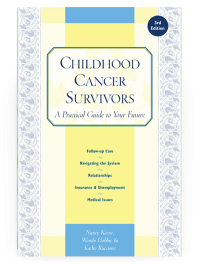Childhood Cancer Survivors
Chapter 9. Hormone-Producing Glands
The future enters into us, in order to transform itself in us, long before it happens.
— Rainer-Maria Rilke Letters to a Young Poet
SOME GLANDS PRODUCE SUBSTANCES called hormones, a term derived from the Greek word hormaein , which means “to excite.” Hormones are released in tiny amounts, but they travel throughout the body to orchestrate complicated processes such as growth, puberty, reaction to stress, temperature regulation, and urine output. Disruptions in the balance of these chemical messengers can profoundly affect both health and quality of life. All of the hormone-producing glands working together make up the body’s endocrine system.
The glands discussed in this chapter—hypothalamus, pituitary, thyroid, testes, ovaries, and adrenal—can be affected by treatment for childhood cancer. Other glands—parathyroid, pancreas, and pineal—are not discussed, as their functions usually remain untouched by treatment.
Table of Contents
All Guides- 1. Survivorship
- 2. Emotions
- 3. Relationships
- 4. Navigating the System
- 5. Staying Healthy
- 6. Diseases
- 7. Fatigue
- 8. Brain and Nerves
- 9. Hormone-Producing Glands
- 10. Eyes and Ears
- 11. Head and Neck
- 12. Heart and Blood Vessels
- 13. Lungs
- 14. Kidneys, Bladder, and Genitals
- 15. Liver, Stomach, and Intestines
- 16. Immune System
- 17. Muscles and Bones
- 18. Skin, Breasts, and Hair
- 19. Second Cancers
- 20. Homage
- Appendix A. Survivor Sketches
- Appendix B. Resources
- Appendix C. References
- Appendix D. About the Authors
- Appendix E. Childhood Cancer Guides (TM)

